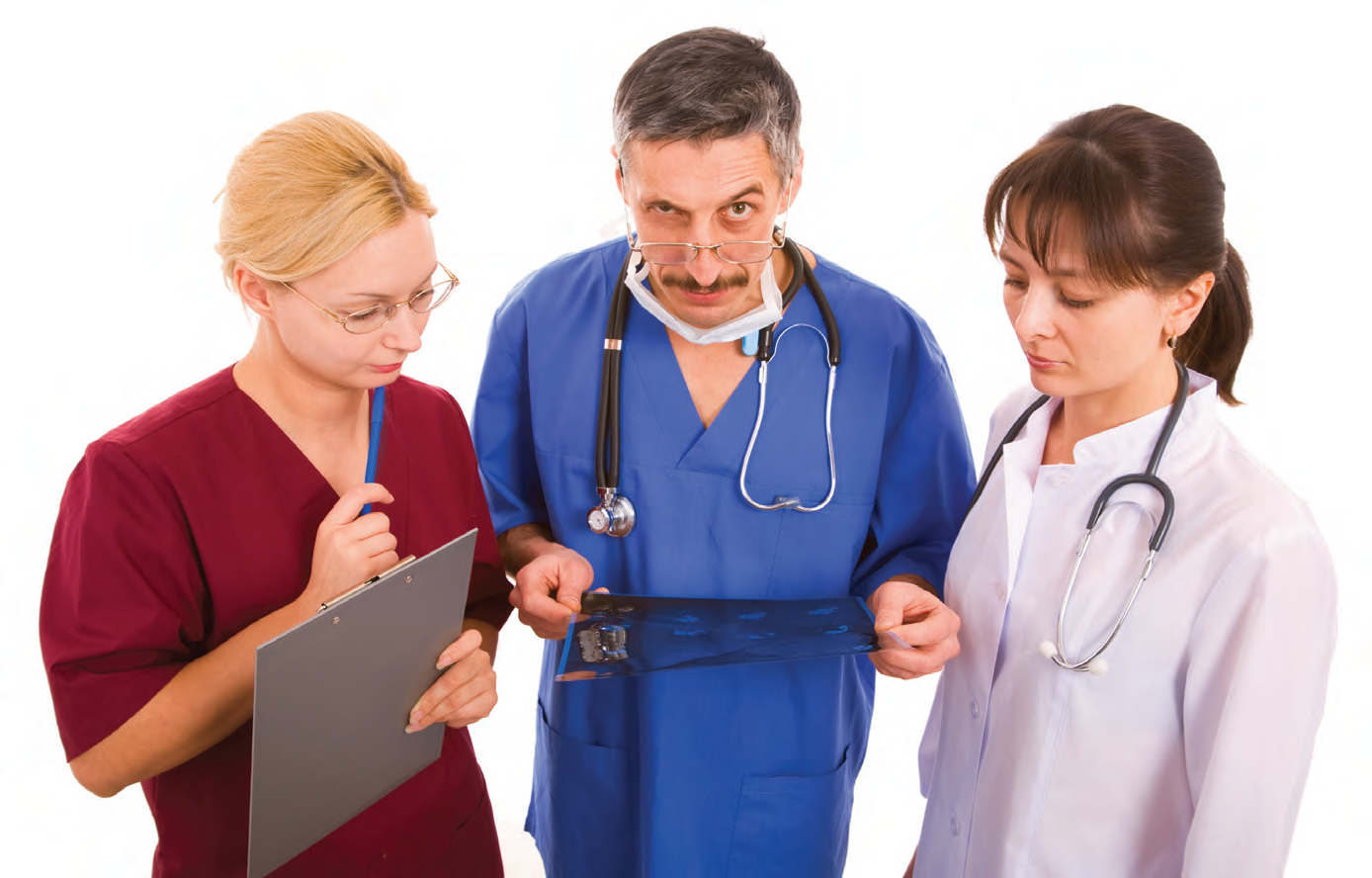Shiny hair and teeth, longer legs, firmer abs, cooler apartments, faster cars—the list of differences between TV docs and the real-life ones is practically endless. Yet from a practical standpoint, the difference that matters the most to real-life patients is this: Can you help me? That’s when the TV docs disappear and the true problem-solvers hit their mark.
Let’s face it. Who doesn’t love a good medical drama? When some “Doc Hollywood” sinks his teeth into a perplexing patient, we are transfixed. These television characters will crack the case—we know it and, on some level, we know they know it, too. The medical dramas that play out on hospital floors every day present the same challenges and demand the same out-of-the-box thinking. However, when a patient stares desperately into a doctor’s eyes, that’s not acting. It’s the real deal. We asked a trio of the top docs at Trinitas to “state their case”—the one that intrigued or challenged them, surprised or gratified them, the kind that makes real-life doctoring far better than doctoring As Seen On TV.
A HELPING HAND For Dr. Richard Mackessy, the chairman of Trinitas’ orthopedics department and a specialist in hand surgery, the toughest patients are often the youngest. He’s spent the past 20 years donating his surgical expertise to Healing the Children, a nonprofit that helps children from around the world come to the U.S. to receive treatment. “Most of the kids have congenital problems with their legs that keep them from getting around,” he says. “We usually have to amputate and give them a prosthesis, but the results are amazing—it allows them to be up and walking around, independent and functional.” Healing the Children sponsored two of Dr. Mackessy’s most memorable patients—a pair of children from Russian orphanages who had severe hand deformities. The first, a boy, was missing a thumb due to a congenital condition. Dr. Mackessy was able to utilize the index finger to create a thumb for the little boy. “You situate the index finger in a different way, attach different muscles, and take one of the bones out of it, and you’ve created a thumb.” The surgery helped the child gain use of his hand. Another, a little girl, was missing most of her left arm below the elbow, and the fingers on the right hand were fused together. Dr. Mackessy was able to separate the thumb and fingers on the right hand, and perform surgery to make her left arm more useable. Both kids not only regained the use of their hands, they gained something else—while they were in America for their surgeries, they were adopted by U.S. families. Dr. Mackessy says he constantly sees the power of medicine. “[This work] makes you see life differently—it shows you what medicine can do for people.”
THE HEART OF THE MATTER For Dr. Arthur Millman, head of Trinitas’ cardiology center, mending broken hearts is all in a day’s work. One of his most interesting patients was a 70-something lady who wanted to skydive. “She wanted to get a letter from us that said that she could go, but she was in severe heart failure, with a leak in the mitral valve,” he recalls. After she was stabilized, Dr. Millman was able to surgically repair her valve. “While you can replace the valve, doing so damages the heart muscle and creates illness in the patient,” he says. “If you are able to fix the valve instead, it’s still you, not some piece of plastic or something that came from a cow or a pig.” With this valve repair, he was able to give the patient a whole new lease on life. “She can take care of herself now, go shopping—things she couldn’t do beforehand. I still tell her that skydiving isn’t a good idea, though.”
SOLVING A MEDICAL MYSTERY When a young diabetic patient came to Dr. Paul Vaiana early in his medical career complaining of numbness in his hands and feet, the now-president of Trinitas Regional Medical Center’s Medical and Dental Staff, might have assumed that the problem stemmed from a failure to take his medications. But Dr. Vaiana noticed something that concerned him. “He had no motor strength, and that made me think that something else was happening.” A spinal tap revealed the cause—Guillain-Barré syndrome, a disorder in which the nervous system comes under attack by the body’s immune system. At the time, not much was understood about the disease, but Dr. Vaiana knew his patient was running out of time. “I knew it needed to be addressed quickly with a very specialized treatment,” he recalls. “If you aren’t able to wash the patient’s blood, they became ventilator-dependent quickly.” Dr. Vaiana and the hospital were able to locate a plasmapheresis machine within 24 hours to cleanse the patient’s blood and get him on the road to recovery. “Everyone worked together on this young man and in three days he was out of the woods,” he remembers. “We were so aggressive in treating it, and now that is the standard care of this disease.” Three decades later, that young man is still Dr. Vaiana’s patient. “I love practicing medicine and having a relationship with my patients,” Dr. Vaiana says. “It’s not the money driving care here—I’m glad to be part of a team who really goes out of their way to help people in their time of need.”
Editor’s Note: Lisa Milbrand is a New Jersey-based writer whose articles on health and relationships appear in Parents, Arthritis Today and Modern Bride. Her blog themamahood.com celebrates the life of a working mother.





